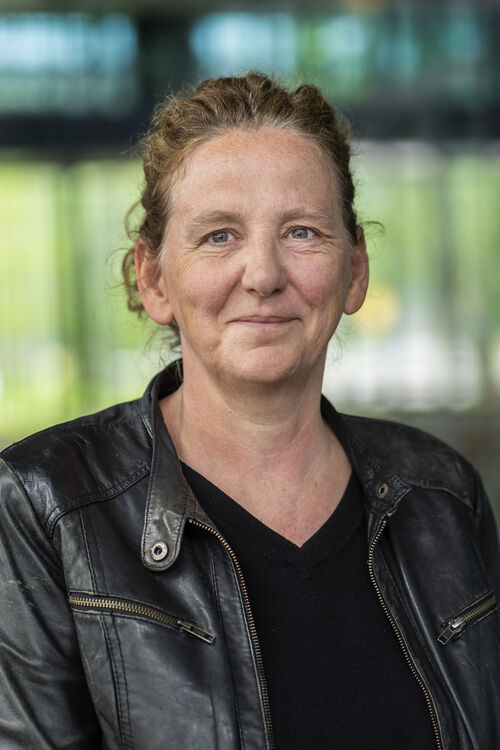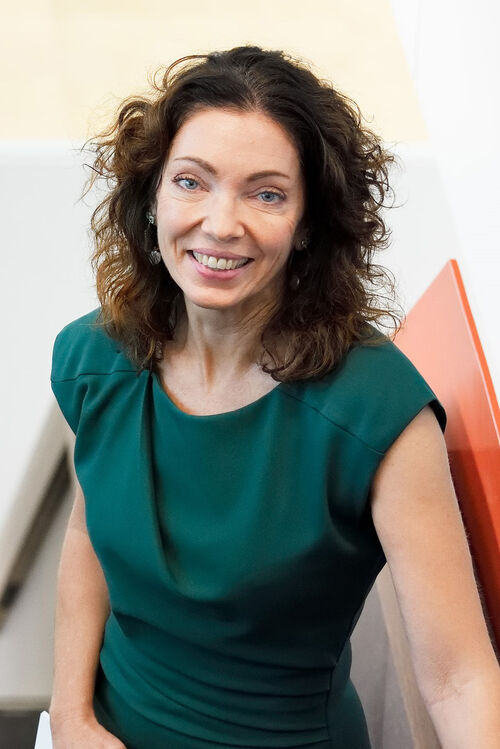
The gray area of social safety
What to do in situations that are not so clearly undesirable
Discrimination, harassment, bullying, exclusion: these are all forms of undesirable behavior that everyone knows are unacceptable. However, between undesirable and desirable behavior lies a very large gray area where things are not so clear. Can you even speak of perpetrators and victims in such cases? And how do you ensure that employees feel comfortable enough to speak out? These are the kinds of questions Corlien van Dam and Bonnie Beerkens focus on at Human Resource Management.
In an ideal world, every employee working at the university would feel like they belong, enjoy working in a team and feel comfortable speaking out. However, reality proves otherwise, which is why TU/e introduced the Social Safety Plan in 2021. That project is constantly evolving and is not just about solving existing problems, but is increasingly about preventing potential problems and bringing about a culture change. That is not to say that, in the desired situation, there cannot be any conflict, emphasizes Van Dam, the initiator of the Social Safety Plan. According to her, it is more important to establish a culture in which everyone feels comfortable speaking out, including people in dependent positions. “It’s about the dialogue.”
But how do you ensure that employees feel safe enough to speak out? That is what the university is trying to raise awareness about, says Beerkens. “This does not concern clearly desirable or undesirable behavior, but everything in between and how you deal with that together.” She says the subject should be treated with more sensitivity, by scanning what is possible, without too much caution. “You don’t want to ruin the fun either, but we do need a little more sensitivity in deciding what kind of jokes are acceptable or not, for example. If a joke makes someone feel excluded, you might better not make it. But if you know someone can handle it - and I know this is a risky thing to say - it’s acceptable in some cases. So it’s not so black and white, but requires sensitivity.”
Culture change
Bringing about a culture change requires commitment from everyone involved, says Beerkens. “That does not take away from the fact that this is really a manager’s area of responsibility.” They even have a duty to act, adds Van Dam. “If managers see things that are not acceptable, they are not allowed to shut their eyes to it.” According to Beerkens, the fact that this currently still happens too often is due to the fact that managers sometimes find it hard to recognize situations in the grey area. And if they do, they are not always sure how and when to intervene. “Managers have more options than they realize. For example, they may ask an employee to behave differently towards colleagues. For many of them, that is truly a new insight.”
However, in some situations, it can be difficult to determine whether something is acceptable or not, or whether it crosses a line. Examples include rolling your eyes when a colleague says something, cutting someone off or not allowing them the opportunity to say something during a meeting. That type of behavior can inadvertently make others feel they are not free to speak their minds without being ridiculed. “Sighing, for example, is another form of silencing someone,” says Beerkens. “A very subtle one, at that. So either you feel it or you don’t; but if you do, it makes you scared to say anything. You might tell someone that they need to stand your ground, but that is easy to say. Good exemplary behavior of the manager is key here."
In addition to intervening themselves, managers can also help employees raise something with colleagues. Confidential counsellors and PhD/EngD counsellors can also help in this respect, for example by preparing for these kinds of discussions together. Beerkens: “They can help you to figure out exactly what is bothering you and how to best communicate and formulate that.” According to Beerkens, when tough issues are voiced within a team, it can already help to considerably ease the whole situation and even prevent really undesirable situations in the “black area”. “We all sometimes communicate something in an awkward or hurting way, not talking about that might lead to things going awry and might have consequences for the relationship between colleagues. But in the end, most people have good intentions.”
No reprisals
Still, she does believe it is also up to those in vulnerable positions and other colleagues to speak out. “The culture of accountability is lacking at the university. We find it difficult to say something when someone crosses our boundaries.” In order to change that, Van Dam says a safe environment is needed. “PhD candidates need to see that there are no reprisals for speaking out. If they see someone else addressing something to a professor and the professor says: thank you for pointing that out to me, maybe they will then feel comfortable enough to speak out as well. That’s the only way.” To that end, professors and other managers must be inviting and show that they’re willing to learn from a PhD candidate if there is something they don’t feel comfortable with, Beerkens adds. “So that requires an experiment on the part of the employee. I realize I’m talking about the person who is the most vulnerable in the situation, but that effort is necessary. We can’t just place all the responsibility on those with power.”
Keep learning
Both Van Dam and Beerkens say they are also still learning about how to create a safe environment within their own teams on a daily basis. They both agree that it’s fine if there’s friction sometimes. Van Dam: “It may happen that we have some tension within our team. We tend to just not do or say anything, or make a derogatory comment. That alone might be enough to trigger someone. We test things out ourselves and practice what we would do in those kinds of situations. That can be a bit scary sometimes.” According to Beerkens, the trick is to be as relaxed as possible with each other and to check in with each other when in doubt. Van Dam: “We want to see this happen everywhere, and that is quite a big step. It's all about raising issues, discussing them and making them open to discussion.”
PhD candidates and learning forums
Several projects have been launched to help teams and specific groups within the university create a socially safe environment. For example, HRM is working on a way to better prepare PhD candidates for the Dutch PhD culture. Beerkens: “A Dutch PhD project requires more autonomy than in the US, for example. We want to start paying specific attention to this for incoming PhD students. That way, it is clear to them that they’re expected to be autonomous, develop their own line of research and formulate (and receive) rebuttals.” The latter, she says, can be especially tricky for PhD candidates from countries with a strong hierarchal culture. “We want to pay more explicit attention to this during the kick-off for PhD candidates and EngD trainees."
In the meantime, more confidential counsellors will be appointed and learning forums will be held with employees of the support network, such as the Ombudsman, confidential counsellors, psychologists, university doctors and HR advisors. The learning forums, set up by Carla Maria Verwer, a coordinator in the field of social safety, are currently scheduled for four sessions. The first session will clarify what shape the learning forums will take, but one thing is already clear: it is all about learning from each other.



Discussion